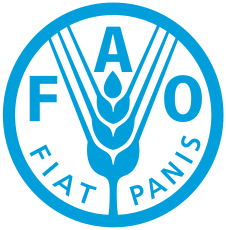 Image via Wikipedia
Image via WikipediaStudies estimate that one billion people are malnourished globally (Source BBC New – Special Reports).
That figure, given in studies by a number of think tanks and aid agencies, represents roughly one in seven of the world's population.
In fact, the FAO – Food and Agriculture Organization of the United Nations estimates that World hunger tops one billion. As of 2009, FAO estimates that 1.02 billion people are undernourished worldwide. This is the highest number since 1970, the earliest year for which comparable statistics are available. > Hunger at a glance > Policy brief > More graphs.
“There are more hungry people than at any time since 1970, the earliest year for which comparable statistics are available.
Hunger has increased not as a result of poor harvests but because of high domestic food prices, lower income and increasing unemployment due to the global economic crisis.“
Analysis shows Afghanistan is the world's least food secure nation, followed by Democratic Republic of Congo, Burundi, Eritrea, Sudan, Ethiopia, Angola, Liberia, Chad, and Zimbabwe. These are classified as 'extreme risk' (red in the image provided by Treehugger). 36 of the 50 most at-risk nations in the world are found in Africa.
The availability of food, and people's ability to access it is known as food security. That security is at risk. In fact, a recent report by the UN Food and Agriculture Organization (FOA) announced that while production of food could keep up with human population, production would have to increase 70 percent by 2050 and prices would have to increase to account for inflation. In the next decade:
Crop prices will increase 15-40%
Dairy prices will increase 16-45%
Livestock prices will be higher than the 1996-2007 average, with the exception of pig meat
Vegetable oil prices will increase 40%
The report was published under the responsibilities of the Director General of FAO1 and the Secretary-General of the OECD2 .
1The Food and Agriculture Organization of the United Nations leads international efforts to defeat hunger. FAO’s mandate is to raise levels of nutrition, improve agricultural productivity, better the lives of rural populations and contribute to the growth of the world economy.
2The OECD - ORGANIZATION FOR ECONOMIC CO-OPERATION AND DEVELOPMENT is a unique forum where the governments of 31 democracies work together to address the economic, social and environmental challenges of globalization. The OECD member countries are: Australia, Austria, Belgium, Canada, Chile, the Czech Republic, Denmark, Finland, France, Germany, Greece, Hungary, Iceland, Ireland, Italy, Japan, Korea, Luxembourg, Mexico, the Netherlands, New Zealand, Norway, Poland, Portugal, the Slovak Republic, Spain, Sweden, Switzerland, Turkey, the United Kingdom and the United States. The Commission of the European Communities also takes part in the work of the OECD.
OECD Publishing disseminates widely the results of the Organization’s statistics gathering and research on economic, social and environmental issues, as well as the conventions, guidelines and standards agreed by its members. See also, The OECD's Online Library of Statistical Databases, Books and Periodicals.
The FAO does have a number of initiates to help alleviate soaring food prices.

No comments:
Post a Comment
Whether you like this and agree with me, or not, thank you for your comments. I normally do not purge an individual comment, unless it is obscene or obvious spam. If you have a question, do feel free to e-mail me at this address darkages2.0@gmail.com - SW